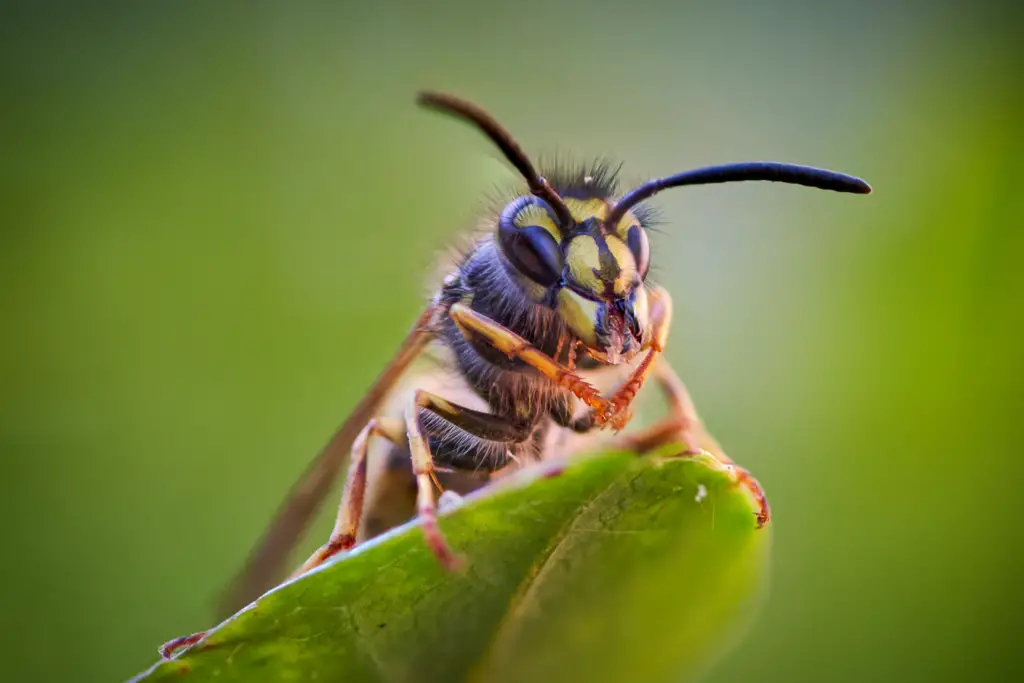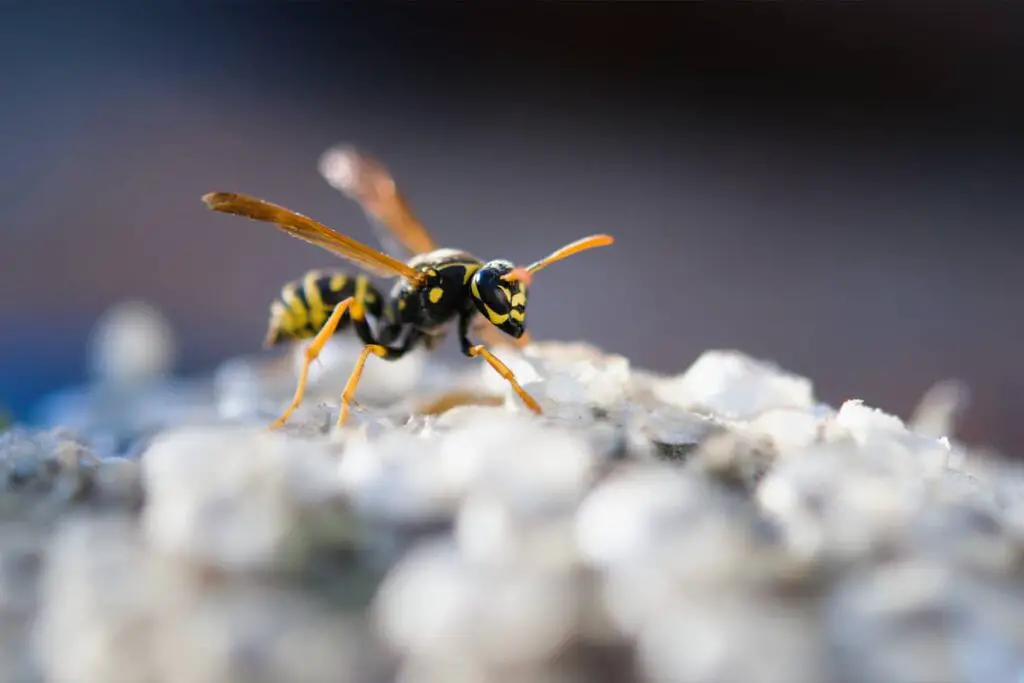
When you observe wasps in their natural habitat, you might notice them engaged in what seems to be a rhythmic dance, tapping their feet rapidly. This intriguing behavior is not just a whimsical activity; it is a part of their complex communication system. Similar to the way bees dance to inform their hive of food locations, wasps use their body language to communicate with each other. The tapping of feet can be a signal to other wasps, possibly relating to the status of their nest or alerting to the presence of food.
The fast-paced foot tapping might also play a role in the wasps’ ability to sense their environment. Wasps are equipped with sensitive receptors on their feet that allow them to pick up vibrations and other sensory cues. This helps them detect movements and possibly even the texture of surfaces which can indicate whether they are in friendly territory or not. Understanding these subtle forms of insect communication can be fascinating, providing insight into the complex social behaviors of these often-misunderstood creatures.
Wasp Behavior Fundamentals
When observing wasps, one behavior you might notice is their tendency to tap their feet. You might wonder what’s driving this foot-tapping dance. There are several reasons for this behavior that are key to understanding wasp communication and interaction with their environment.
Sensory Exploration: Just like you use your hands to explore surfaces, wasps use their feet to sense vibrations and chemicals. This lets them gather information about food sources or their surroundings.
Communication: Tapping could be part of how wasps communicate with each other. Through sequences of taps, they might convey messages to fellow wasps, possibly about food or danger.
Territorial Behavior: Sometimes, a wasp’s foot tapping is a show of dominance. Just like you might stand tall to seem more imposing, wasps make their presence known to other insects and animals through such actions.
Remember, these are natural behaviors that are crucial for their survival and are not meant to intimidate or harm you. Understanding these little nuances in wasp behavior can really enhance your appreciation for these complex creatures. Just watch them from a distance to avoid any stings, as they also use their stingers to protect their homes and themselves when necessary.
Sensory Perception and Communication
Wasps exhibit a fascinating array of behaviors that link directly to their perception of the world and their communication with other wasps. When you see a wasp tapping its feet, it’s not just a random activity; it’s actually a complex process of sensory perception and communication.
- Touch: Wasps use their feet to sense vibrations. Vibrations can carry information about the nearby environment or can be a way wasps communicate with each other.
- Chemical Signals: The tapping might also distribute chemical markers from special glands in their feet, leaving scent trails for other wasps to follow.
By tapping their feet, wasps may be:
- Mapping their surroundings.
- Signaling to nestmates.
- Marking territory.
This behavior is a form of communication that is essential to the wasp’s interaction with other members of its colony and its ability to navigate the world. For more detailed insight into how some insects use their body parts for perception, take a look at how Some Insects Taste With Their Feet and Hear With Their Wings.
Remember, your observation of the small world of insects like wasps can reveal a great deal about the roles their senses play in survival and social structure.
Foot Tapping Functions
When you observe wasps, you may notice they sometimes tap their feet. This behavior isn’t just for show; it serves important functions.
Communication: Among the buzzing of wings and antennae movements, foot tapping is another way wasps communicate with each other. They might use it to signal distress or alert others in the nest about food sources or danger.
Navigation: Like a built-in GPS, wasps use vibrations – including those from tapping their feet – to help navigate. The unique way they interact with their environment helps them understand their relative position in space.
Temperature Regulation: Just as you might tap your foot while waiting in line to keep warm, wasps may tap their feet to regulate their body temperature. This is vital for their survival, especially in cooler climates.
Territoriality: Foot tapping can serve as a warning to other insects and animals. By tapping their feet, wasps assert their presence and can deter potential intruders from approaching their nest.
Remember, while wasps might seem bothersome during your picnic, they’re just using one of their many tools to thrive in their environment. Next time you see a wasp tapping away, know it’s just another day in the life of these fascinating insects.
Environmental Interactions and Observations
Have you ever watched a wasp and noticed it tapping its feet? You’re observing a fascinating behavior that’s a part of how wasps interact with their environment. When wasps tap their feet, they’re actually sensing what is around them. It’s a bit like when you touch something to get a feel for it. Here’s what’s happening:
- Vibration Sensing: Like a mini seismograph, the wasp uses the vibrations it creates to detect prey or other wasps.
- Communication: By tapping, wasps can send out signals to their fellow colony members about danger or food sources.
In various surroundings, whether it’s a sprawling garden or the eaves of your roof, wasps adjust their tapping:
- On plants: They tap to assess the plant’s health and suitability, perhaps as a potential food source or nesting area.
- In the nest: Here, tapping reinforces social bonds and may help in the coordination of colony activities.
Remember, if you see wasps tapping, it’s best to give them space. They use their ability to sense through tapping as part of their essential role in the ecosystem, doing things like pollinating plants and controlling pests. Next time you spot this behavior, take a moment to appreciate these unsung heroes of the environment.
Frequently Asked Questions
In this section, you’ll find concise answers to some common curiosities about wasp behaviors and characteristics.
How can you tell if a wasp is feeling threatened?
When a wasp feels threatened, it may display aggressive behaviors such as buzzing loudly, flying erratically, or making quicker and more sudden movements. A defensive wasp might also spread its legs, which is associated with it getting ready to sting.
What signs indicate that a wasp is dying?
A dying wasp often has sluggish or uncoordinated movements. You might notice it crawling rather than flying, or it may be unable to stand and appear lethargic.
What are the feeding habits of wasps?
Wasps are known to feed on nectar, tree sap, fruits, and in some cases, other insects or spiders. Worker wasps are also known to bring back food to their larvae in the nest.
How can one differentiate between a wasp and a hornet?
Hornets are a type of wasp, generally larger in size and have a wider head. Hornets tend to have larger and more enclosed nests compared to the open combed nests of many wasp species. Hornets can also exhibit more aggressive behavior.
What is the behavior of queen wasps compared to workers?
Queen wasps primarily focus on laying eggs and rarely leave the nest once the worker wasps have matured. On the other hand, worker wasps are responsible for foraging for food, nest construction, and defense.
Is it true that remaining motionless can prevent a wasp from stinging?
Staying motionless can sometimes prevent a wasp from stinging, as rapid movements may be perceived as a threat. However, if a wasp is already in an aggressive state or if you are near their nest, remaining still may not always prevent a sting.
Driven by a passion for those tiny creatures that rule our world, we at Bug Domain strive to be your go-to resource for information on insects.




